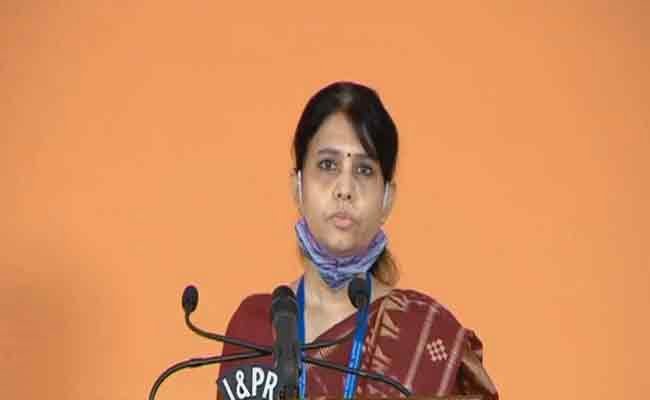Second Wave Of COVID-19 Carries Greater Velocity: RMRC Director

Bhubaneswar: The Regional Medical Research Centre (RMRC), Bhubaneswar on Monday cited various factors for the alarming rise in COVID-19 cases in Odisha.
In an interactive session of Information and Public Relation department with media persons, RMRC director Sanghamitra Pati said it has been found that compared to the first wave, the second wave has more velocity with a sharp rise and fall.
On the causes of rapid transmission of the COVID-19, she said the new variants (different forms) of the virus and the complacency of people towards COVID appropriate behaviour are primarily responsible for the alarming rise in the positive cases.
“It is found that the people develop pandemic fatigue like restlessness, irritation, lack of motivation, difficulty in concentrating on tasks, withdrawing from socialising. Besides, they also show physical symptoms such as changes in eating and sleep habits. The fatigue can occur when people are tired of the pandemic measures and become less likely to follow public health practices. A natural sense of burnout can happen since they have had to stick to these public health measures for such a long period of time. Now that the pandemic has assumed alarming proportions, we have to again adopt the old practices like wearing masks, hand sanitisation, staying at home and not moving out of the house without any urgent work,” Pati said.
Stating that any pandemic is a chain of transmission, she spoke about the following measures to stop the transmission:
—As per the ICMR testing guidelines, if a person has come in contact with a COVID afflicted person and becomes symptomatic, he/she has to immediately go for the test. But if the person with whom he/she had come with physical contact tests positive, the test should be conducted in 3-5 days and if asymptomatic, the test should be done on the fifth day.
—As long as the person has not received the test report, he/she should remain under self-isolation and use the mask.
—If a person has taken two doses of vaccine and has come in contact with a COVID infected person, he/she has to remain in home isolation, use a mask and go for the test on the fifth day of his/her exposure.
—If a person develops symptomatic conditions a day after testing negative, he/she should consult a doctor, follow the COVID appropriate protocol and go for another test.
—A COVID-infected person can transmit the virus to as many people in proportion to the viral load. If the infected person is suffering from the virus for a prolonged period and has less immunity, he/she can transmit the virus to more people in less time.
—If all members of a family are tested positive, they should wear masks and try to isolate themselves from each other as far as practicable.
—If a person tests negative and still has symptoms, he/she should consult the doctor and again go for the RT-PCR test, if the symptoms persist.
—If a person recovers from the disease, as per the norms, he/she can go for the vaccination after three months or at best after 6-7 weeks.
—If a COVID patient during home isolation is looked after by an attendant or any of his family members, they should use the mask and gloves and isolate themselves from other family members. Besides, the family members must isolate themselves from the infected member and the attendant.

Comments are closed.